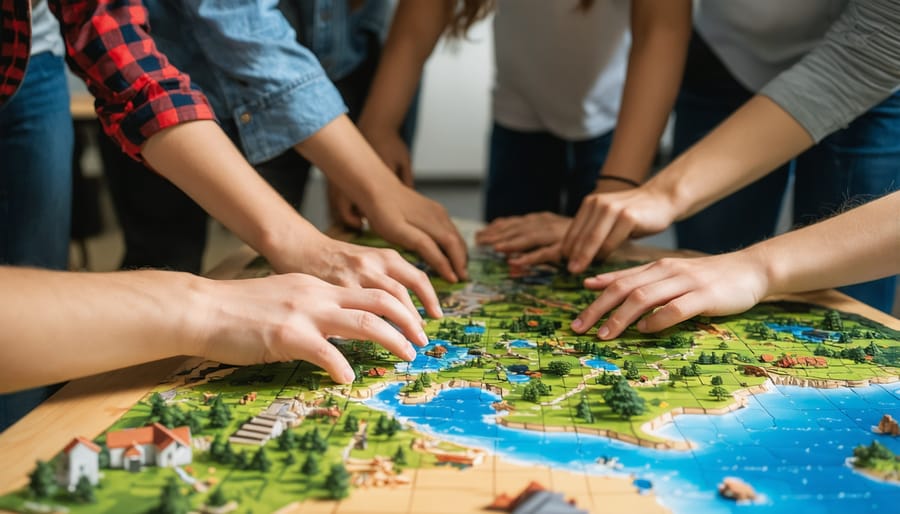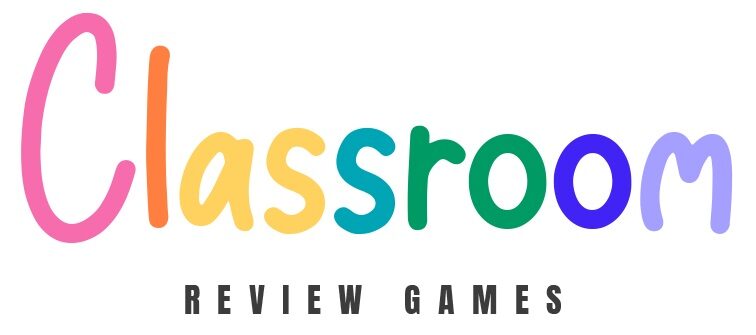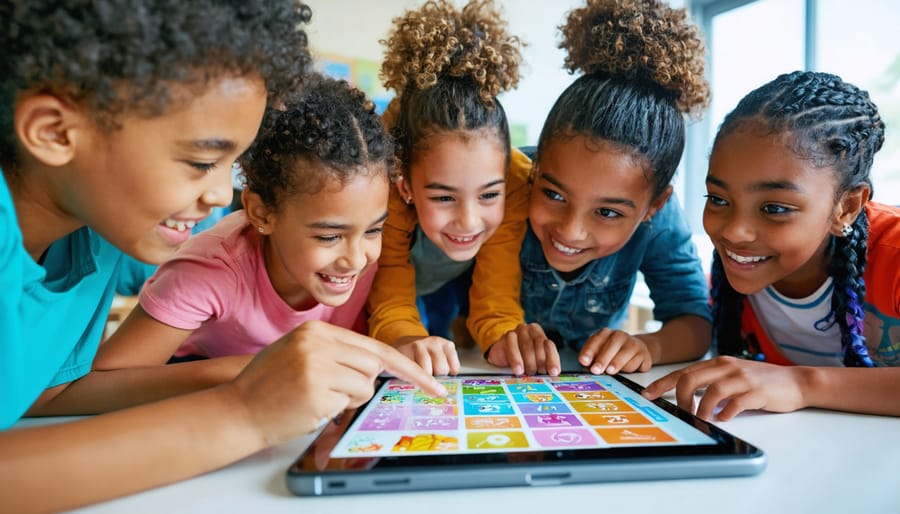Make Your Classroom Come Alive with E-Learning Games (That Actually Work)
Transform your virtual classroom into an engaging gaming arena where learning feels like play. E-learning gamification isn’t just about adding points and badges—it’s about creating an immersive experience that motivates students to dive deeper into their learning journey.
Today’s students are digital natives who thrive on interactive experiences. By incorporating game elements like challenges, rewards, and competitive elements into your online lessons, you tap into their natural desire for achievement and recognition. Studies show that gamified learning environments can increase student engagement by up to 60% and improve information retention by 40%.
Whether you’re teaching math through digital treasure hunts or language arts through story-based quests, gamification offers endless possibilities to make learning both effective and enjoyable. As more classrooms shift toward digital platforms, mastering these engagement techniques isn’t just beneficial—it’s essential for modern education.
Let’s explore how you can turn your e-learning content into an adventure that students can’t wait to experience.
Why Games Are Your Secret Weapon in Modern Teaching
The Science Behind Student Engagement
Research shows that gamification isn’t just about making learning fun – it’s about how our brains are wired to learn. When students engage with gamified content, their brains release dopamine, a chemical that enhances motivation and memory retention. Studies have consistently demonstrated a positive impact on student engagement, with success rates improving by up to 40% in gamified learning environments.
The magic happens through three key mechanisms: immediate feedback, progressive challenges, and social interaction. When students receive instant feedback, they’re more likely to stay motivated and correct mistakes quickly. Progressive challenges keep them in what psychologists call the “flow state” – that sweet spot between too easy and too difficult. Meanwhile, the social elements of gamified learning tap into our natural desire to connect and compete, making the learning experience more meaningful and memorable.

Beyond Points and Badges
While points and badges have their place, modern gamification goes far beyond these basic rewards. Today’s most effective e-learning experiences incorporate storytelling, choice-based learning paths, and real-world problem-solving scenarios that deeply engage students. Consider creating classroom quests where students become scientists solving environmental challenges or historians uncovering ancient mysteries.
Role-playing elements allow students to take on different perspectives and develop empathy while learning. For instance, students might become medieval traders learning about economics or environmental advocates studying climate change. Progress bars and learning trees can show advancement in skills rather than just accumulating points.
Collaborative challenges and team-based competitions foster social learning and peer support. Think about implementing “guild” systems where students work together on long-term projects or creating “boss battles” that require combining different subject knowledge to solve complex problems. The key is making the gaming elements meaningful and naturally integrated into the learning process.
Practical Game Elements That Transform Your Lessons
Interactive Review Sessions
Transform your standard review sessions into exciting game experiences that students will actually look forward to! As game-based learning in education continues to evolve, there are countless ways to make review sessions more engaging.
Start by turning multiple-choice questions into a “Quest for Knowledge” where students earn points or badges for correct answers. Create virtual treasure hunts where each correct answer reveals a clue to the next question. You can also implement a “Power-Up” system where students can earn special abilities, like asking for hints or skipping challenging questions.
Consider using timer-based challenges to add excitement – but keep them stress-free! Let students compete against their own previous scores rather than each other. Create team-based review games where collaboration leads to bonus points. Digital spinners or random card draws can add an element of surprise to question selection.
Don’t forget to celebrate progress! Create a virtual achievement wall where students can display their badges, high scores, or completion certificates. Remember to keep the focus on learning while maintaining the fun factor – the games should enhance understanding, not overshadow it.
Team Challenges That Work
Team challenges can transform your classroom into an exciting collaborative learning environment while keeping competition healthy and constructive. Create mixed-ability teams to ensure balanced participation and encourage peer support. Consider implementing a points system where teams earn rewards for both academic achievement and positive behaviors like helping others.
Quick-win challenge ideas include weekly quiz battles where teams compete to answer subject-related questions, collaborative problem-solving races, and creative project competitions. Keep the focus on improvement rather than winning by celebrating team progress and creative solutions.
To maintain positive dynamics, rotate team members regularly and establish clear ground rules about respectful competition. Consider implementing “helper points” where teams earn extra credit for supporting other groups. This approach teaches students that success comes from lifting each other up, not putting others down.
Remember to celebrate small victories and create opportunities for all teams to shine in different areas. When students feel their contributions matter, they’re more likely to engage enthusiastically while maintaining a supportive classroom atmosphere.

Progress Tracking Made Fun
Transform progress tracking into an adventure with creative visualization tools that students will love! Set up digital achievement boards where learners can watch their avatars climb mountains, sail across oceans, or explore space as they complete modules. Create customizable badges that reflect your classroom’s unique personality – from “Math Wizard” to “Grammar Guardian.”
Consider implementing a points-based reward system where students can unlock special privileges or virtual items. Digital progress bars filled with sparkles, animated confetti celebrations for milestone achievements, and personalized achievement certificates add that extra touch of excitement.
Don’t forget about team challenges! Create friendly competition with class leaderboards or collaborative goals where students work together to fill a virtual treasure chest. Remember to celebrate both individual and group successes – whether it’s through digital high-fives, virtual sticker collections, or customized achievement announcements that pop up during class.

Setting Up Your First E-Learning Game
Choosing the Right Game Format
Selecting the right game format is crucial for engaging students effectively. For younger learners (K-3), simple matching games, digital puzzles, and colorful quiz formats work best. These games should feature large buttons, clear instructions, and immediate positive feedback to maintain enthusiasm.
Middle school students respond well to adventure-style games and competitive elements. Consider using point systems, leaderboards, and team-based challenges that align with their growing social awareness and desire for peer recognition.
For high school students, incorporate more sophisticated game mechanics like strategy elements, branching scenarios, and real-world simulations. These formats support critical thinking while maintaining engagement through meaningful challenges.
When choosing a game format, consider your subject matter carefully. Math concepts work well with timed challenges and problem-solving games, while language arts benefit from word-building activities and storytelling adventures. Science topics shine in simulation-based games, and social studies come alive through role-playing scenarios.
Remember to match the game’s complexity with your students’ technical abilities. Start simple and gradually introduce more complex formats as students become comfortable with gamified learning. The best format is one that both challenges and motivates while remaining accessible to all learners in your classroom.
Customization Tips That Save Time
Making game templates work for your classroom doesn’t have to be time-consuming! Start by creating a master template for each type of game you frequently use – whether it’s quiz shows, word puzzles, or adventure games. Save these as your go-to foundations that you can quickly modify.
Use placeholder text for common elements like “Insert Topic Here” or “Add Learning Objective” to make quick swaps. Create a personal library of images, sound effects, and backgrounds that match your teaching style. These can be easily dragged and dropped into new games.
Keep a spreadsheet of question banks organized by subject and difficulty level. When creating a new game, simply copy and paste relevant questions instead of writing them from scratch. Remember to save different versions of successful games – what works for math might need slight tweaks for language arts.
Take advantage of batch editing features in your game creation tools. For example, change all button colors at once or update font styles across multiple slides simultaneously. Finally, collaborate with fellow teachers to share templates and resources. There’s no need to reinvent the wheel when you can build upon what already works!
Avoiding Common Gamification Pitfalls
While gamification can transform your classroom, it’s important to watch out for common pitfalls that might derail your efforts. First, avoid making games too competitive. While healthy competition can be motivating, too much can discourage students who aren’t naturally competitive or who struggle initially.
Balance is key – mix individual challenges with collaborative activities where students work together toward shared goals. This approach helps maintain a positive classroom atmosphere while still keeping everyone engaged.
Another common mistake is overcomplicating the game mechanics. Start simple and gradually add complexity as students become comfortable. Remember, if you’re spending more time explaining rules than teaching content, it’s probably too complex.
Don’t forget to align game elements with your learning objectives. Cute badges and points are fun, but they should reinforce actual learning goals. Make sure rewards and achievements directly connect to mastering course material.
Watch out for the “novelty trap” – when initial excitement wears off, students might lose interest. Keep things fresh by regularly introducing new challenges and varying game formats. Consider rotating between different game styles, from quizzes to role-playing scenarios.
Lastly, avoid making participation mandatory for every activity. Some students might prefer traditional learning methods for certain topics, and that’s okay. Offer alternatives while keeping the gaming elements optional but enticing.
As we’ve explored throughout this article, gamification isn’t just a trendy buzzword – it’s a powerful tool that can transform your classroom into an engaging, motivating learning environment. By incorporating game elements like points, badges, leaderboards, and challenges into your e-learning activities, you can spark curiosity, boost participation, and make learning more enjoyable for your students.
Remember, you don’t need to revolutionize your entire teaching approach overnight. Start small by gamifying one lesson or unit, then build from there based on what works best for your students. Whether it’s turning vocabulary practice into a digital quest or making math problems into competitive challenges, the possibilities are endless.
The most important thing is to maintain a balance between fun and learning objectives. Keep your educational goals at the forefront while using gamification to enhance engagement and motivation. Your students’ enthusiasm and improved learning outcomes will make the effort worthwhile.
Ready to get started? Pick one simple gamification element to try this week. Your journey toward more interactive, engaging learning experiences begins with that first step!


